Exploring the intricacies of interpreting Keltner Channels unveils a realm of strategic insight for traders aiming to navigate the complexities of market analysis.
Understanding the ten key steps to deciphering these channels can provide a structured approach to leveraging their potential effectively.
From grasping the foundational calculation to fine-tuning entry and exit points based on channel dynamics, each step offers a piece of the puzzle in harnessing the power of Keltner Channels.
As we delve into these steps, a comprehensive understanding of this tool's nuances emerges, paving the way for informed decision-making in the realm of technical analysis.
Understanding Keltner Channel Calculation
The cornerstone of comprehending Keltner Channel Calculation lies in the precise integration of Exponential Moving Average (EMA) and Average True Range (ATR) formulas to define the upper and lower bands relative to price movements. The EMA serves as the centerline, reflecting the average price over a specified period, while the ATR measures market volatility.
By adding 2 times the ATR to the EMA, the upper band is established, indicating potential resistance levels. Conversely, subtracting 2 times the ATR from the EMA generates the lower band, suggestive of possible support levels. These bands dynamically adjust with price fluctuations as the EMA and ATR values are recalculated periodically.
The technical nature of Keltner Channels lies in their volatility-based structure, offering insights into potential trends and price actions. Understanding the intricate relationship between the EMA, ATR, and band multipliers is crucial for effectively utilizing Keltner Channels in technical analysis to make informed trading decisions.
Identifying Keltner Channel Trends
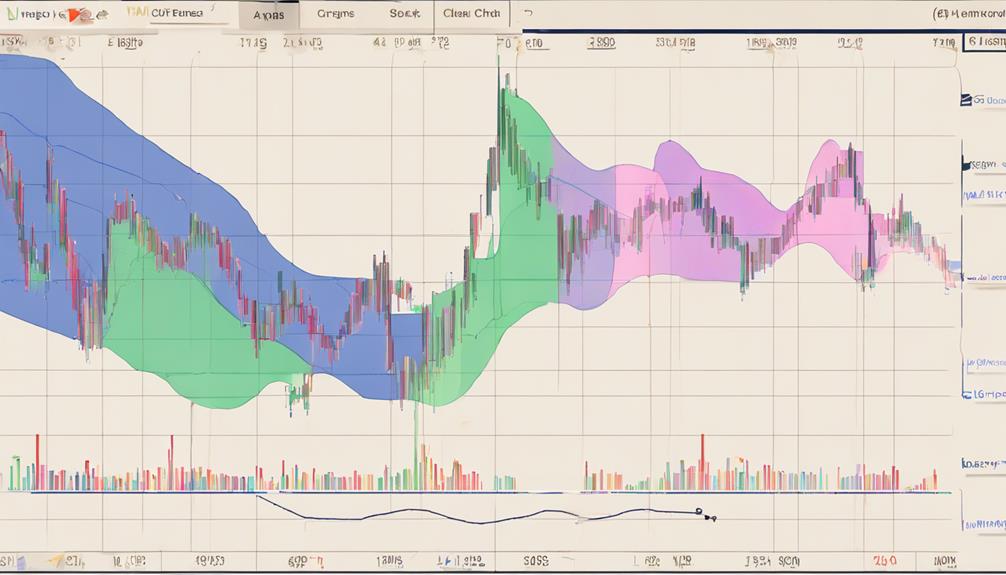
Utilizing Keltner Channels facilitates the identification of prevailing trends through a systematic analysis of price movement direction. The channels consist of three lines: the middle line representing an exponential moving average of the asset's price, and the upper and lower bands based on the average true range.
When the price action stays above the middle line and closer to the upper band, it suggests an upward trend. Conversely, if the price remains below the middle line and closer to the lower band, a downward trend is indicated. The slope of the channel can also provide insight into the strength and direction of the trend. An upward-sloping channel signifies an uptrend, while a downward slope indicates a downtrend.
In contrast, a horizontal channel may signal a ranging or consolidating market. Traders keenly observe price action concerning the channel boundaries to confirm existing trends or anticipate potential trend changes, making Keltner Channels a valuable tool for trend identification and analysis.
Interpreting Keltner Channel Width
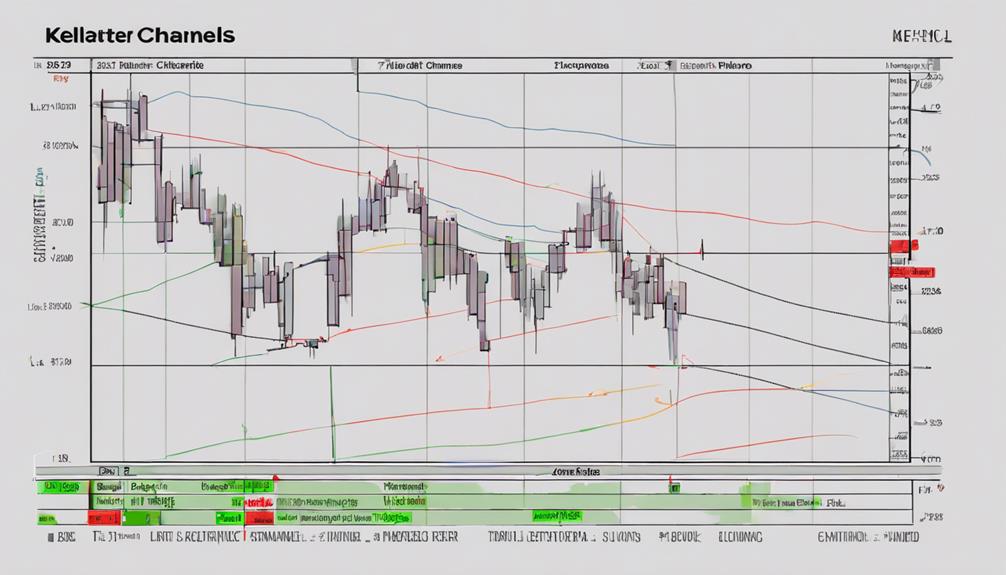
The width of Keltner Channels serves as a crucial indicator of market volatility levels and potential trend shifts. Analyzing the width of these channels allows traders to gain insights into the strength and direction of price movements.
Width Analysis Techniques
Analyzing Keltner Channel width offers valuable insights into market volatility dynamics and potential price fluctuations.
- Wider Channels: Higher volatility and larger price swings.
- Narrow Channels: Lower volatility and potential trend consolidation.
- Trading Strategies: Adjustments based on width analysis.
- Breakout Opportunities: Identifying potential breakouts or breakdowns.
Traders rely on monitoring channel width to assess market conditions accurately and adapt their strategies accordingly. By understanding how channel width reflects market volatility, traders can anticipate potential price movements and adjust their trading plans to capitalize on breakout opportunities effectively. Width analysis serves as a vital tool in the trader's arsenal when navigating the dynamic landscape of financial markets.
Volatility Implications Explained
When interpreting Keltner Channel width, traders can gain valuable insights into market volatility dynamics and potential price fluctuations. The width of the channels directly correlates with market volatility levels, with wider channels indicating higher volatility and narrower channels suggesting lower volatility.
Analyzing these width changes allows traders to assess potential price movements and determine the strength of the current trend. Understanding the implications of volatility is essential for adapting trading strategies to current market conditions.
Recognizing Keltner Channel Squeezes
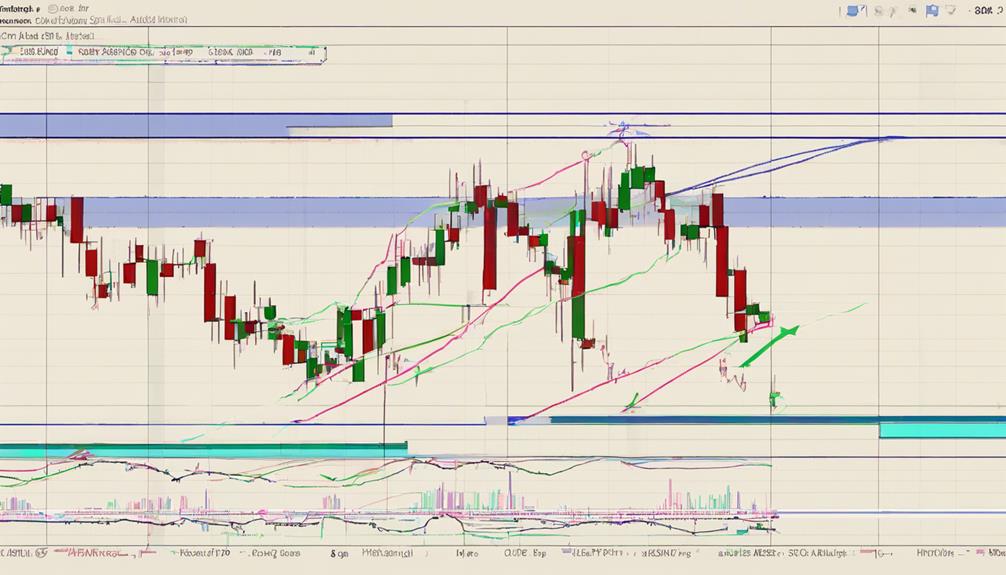
During market analysis, identifying Keltner Channel squeezes plays a crucial role in anticipating potential price breakouts and trend changes. When the upper and lower bands of the Keltner Channels narrow, it signifies reduced volatility and the potential for a price breakout. Traders often see Keltner Channel squeezes as a signal of impending price movement after consolidation periods. These squeezes can precede significant price shifts, providing trading opportunities for capitalizing on breakouts. They also indicate periods of low volatility, suggesting potential explosive price movements in either direction.
- Keltner Channel squeezes indicate reduced volatility and potential price breakout.
- Traders use squeezes as signals for impending price movements post-consolidation.
- Squeezes precede significant price shifts, allowing traders to benefit from breakouts.
- Low volatility periods with squeezes suggest possible explosive price movements in any direction.
Utilizing Keltner Channels for Entry
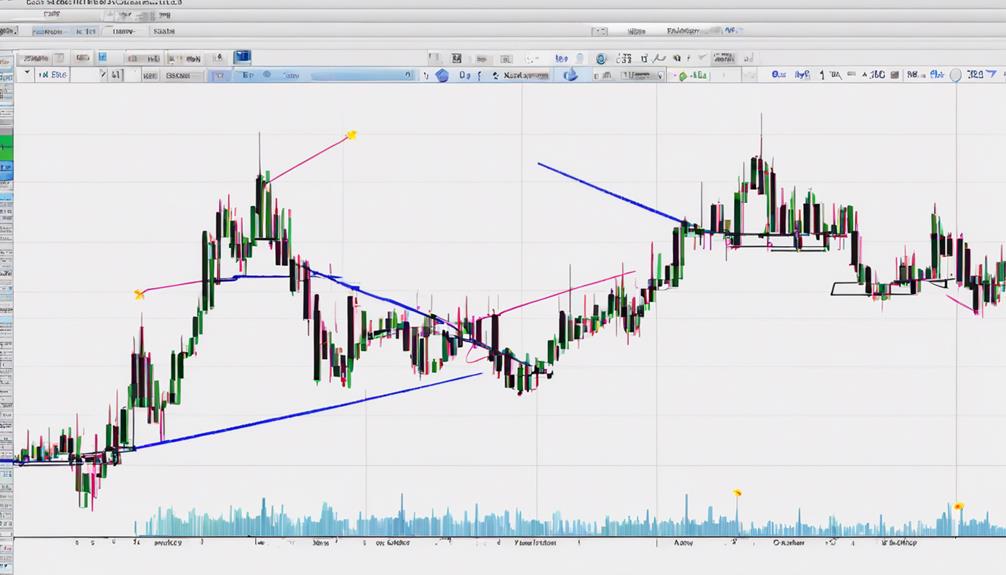
The strategic use of Keltner Channels for entry in trading scenarios offers traders a systematic approach to identifying favorable opportunities with defined risk levels. When considering entry points, traders typically wait for the price to break above the upper band of the Keltner Channels for a potential long entry signal.
It is crucial to seek strong volume confirmation when prices break above the upper band to validate the entry signal's strength. This confirmation of the breakout above the upper band not only validates the entry but also indicates potential upward momentum. Entry signals generated by Keltner Channels breaking above the upper band are often more reliable in trending markets characterized by strong momentum.
Managing Risk With Keltner Channels
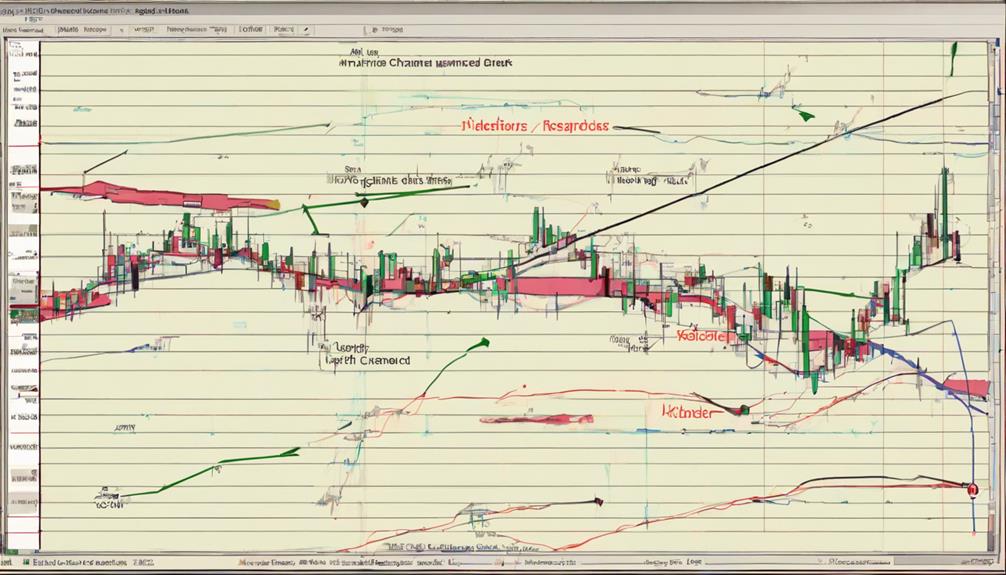
Effectively managing risk in trading scenarios with Keltner Channels involves utilizing dynamic support and resistance levels based on asset volatility to optimize risk exposure and enhance decision-making processes. When it comes to managing risk with Keltner Channels, traders can benefit from the following strategies:
- Utilize dynamic support and resistance: Keltner Channels adapt to market conditions, offering traders insights into changing levels of support and resistance based on asset volatility.
- Adjust risk exposure based on channel width: The width of the Keltner Channels reflects recent price volatility, aiding traders in assessing risk levels and determining appropriate position sizes.
- Incorporate price action analysis: Observing how the price interacts with the channels can help traders fine-tune their risk management strategies in real-time.
- Optimize trade entries and exits: By effectively managing risk with Keltner Channels, traders can improve their overall trade execution and maximize profit potential while minimizing losses.
Setting Profit Targets With Keltner Channels
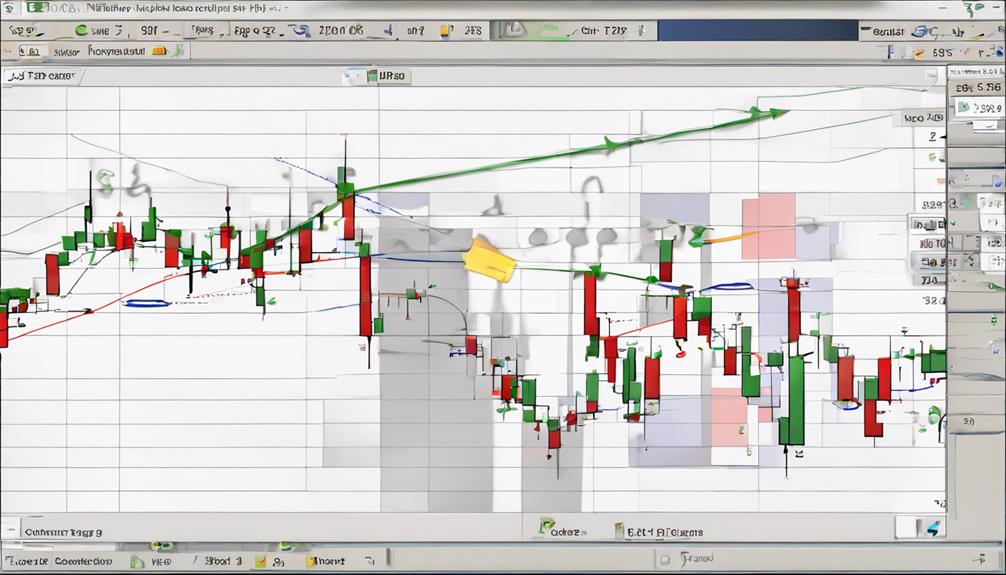
Drawing on the insights gained from managing risk with Keltner Channels, traders can strategically establish profit targets by leveraging the upper band as a key reference point for potential resistance levels. When the price approaches or touches the upper band of the Keltner Channel, it may indicate a possible resistance level, prompting traders to consider taking profits.
Setting profit targets with Keltner Channels involves analyzing the distance between the current price and the upper band to determine potential gains. By using the upper band as a profit target, traders can aim to capture gains during upward price movements. It is essential to adjust profit targets based on market conditions and individual risk tolerance levels to optimize profitability.
Monitoring price movements in relation to the upper band can provide valuable insights for making informed decisions on when to take profits and adjust profit targets accordingly.
Incorporating Keltner Channels in Strategies
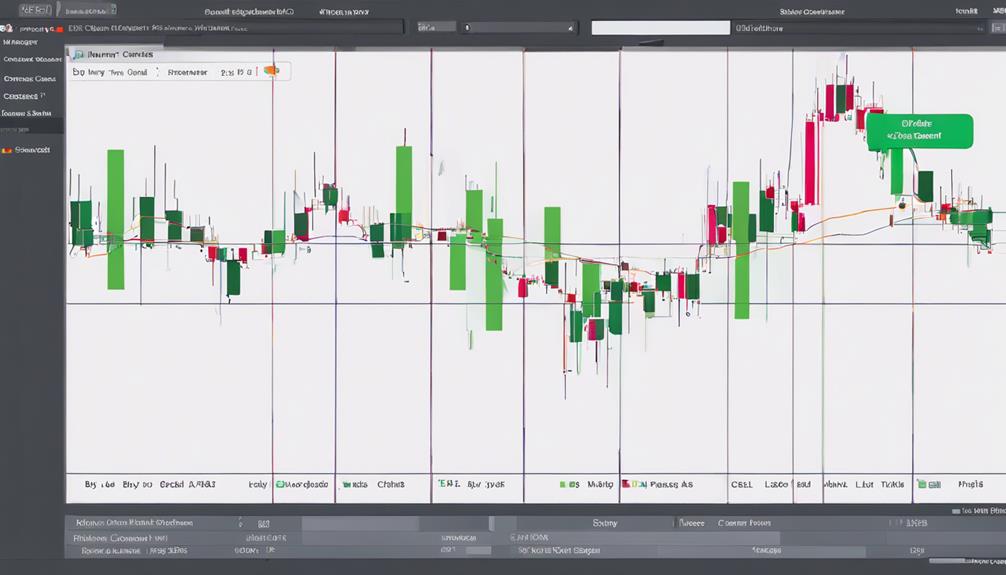
Incorporating Keltner Channels in trading strategies involves implementing key tips for strategy execution, analyzing price movements in relation to the channel bands, and setting precise entry and exit points based on breakouts and breakdowns.
By strategically combining Keltner Channels with other technical indicators, traders can enhance the accuracy of their signals and adapt to varying market conditions effectively.
Understanding how price volatility influences the width of the bands is crucial for gauging the strength of price trends and making informed trading decisions.
Strategy Implementation Tips
Utilizing Keltner Channels in trading strategies offers a dynamic approach to identifying key reversal points and potential trend continuations. When incorporating Keltner Channels in strategies, consider the following implementation tips:
- Utilize Keltner Channels as dynamic support and resistance levels for entry and exit points.
- Look for breakout signals by monitoring price movements relative to the Keltner Channel bands.
- Integrate Keltner Channels with other technical indicators to confirm signals and enhance trading strategies.
- Adjust Keltner Channel parameters based on market conditions and asset volatility to optimize effectiveness and adapt to changing trends.
Analyzing Price Movements
When evaluating price movements within trading strategies, the integration of Keltner Channels serves as a valuable tool for identifying dynamic support and resistance levels based on market volatility. Traders use Keltner Channels to pinpoint potential trend changes and determine entry/exit points effectively.
The middle EMA line within the Keltner Channels assists in assessing short-term market trends and momentum shifts. By observing when prices breach the upper or lower bands with substantial volume, traders can spot breakouts and breakdowns accurately.
Combining Keltner Channels with other indicators like Bollinger Bands enhances the comprehensive analysis of price movements and confirms trends. The dynamic nature of Keltner Channels makes them indispensable for traders seeking to make informed decisions based on evolving market conditions.
Setting Entry and Exit
To optimize trading strategies effectively, one must strategically incorporate Keltner Channels for setting precise entry and exit points based on market dynamics.
- Incorporate Keltner Channels by setting entry points at band breaks for potential trade opportunities.
- Use Keltner Channels to determine exit points by observing price reversals near the bands.
- Combine Keltner Channels with other technical indicators to confirm entry and exit signals.
- Adjust Keltner Channel settings based on the asset's volatility and trading timeframe for better strategy alignment.
It is essential to practice backtesting with historical data to fine-tune entry and exit rules using Keltner Channels, ensuring a more robust and reliable trading strategy.
Monitoring Keltner Channel Breakouts
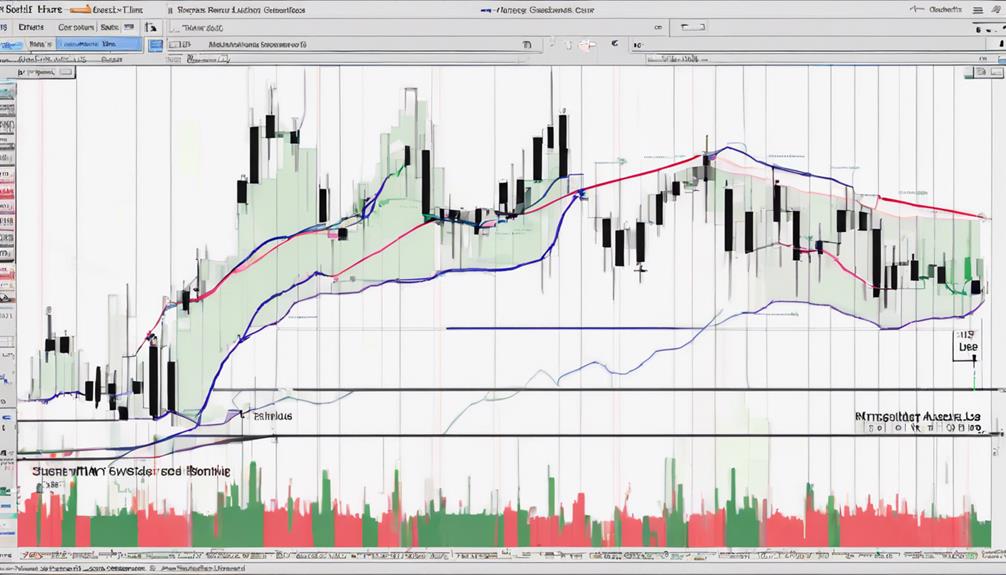
Monitoring Keltner Channel breakouts allows traders to proactively assess potential price movements based on breaches of the upper or lower bands. Breakouts above the upper band in Keltner Channels suggest a potential upward price movement, indicating a bullish sentiment in the market. Conversely, breakouts below the lower band imply a possible downward price movement, signaling a bearish trend. By monitoring these breakouts, traders can anticipate significant price shifts and adjust their strategies accordingly.
In addition to observing breakouts, traders often look for volume confirmation to validate the strength of the price movement. A surge in trading volume accompanying a breakout can provide further assurance that the price movement is robust and not merely a temporary fluctuation. Volume confirmation adds a layer of confidence to the breakout signal, helping traders make more informed decisions.
Therefore, monitoring Keltner Channel breakouts, along with assessing volume confirmation, is a key aspect of utilizing Keltner Channels effectively in trading strategies. By staying vigilant to these breakouts and their accompanying volume dynamics, traders can enhance their ability to capitalize on price movements in the market.
Adapting Strategies to Keltner Channels
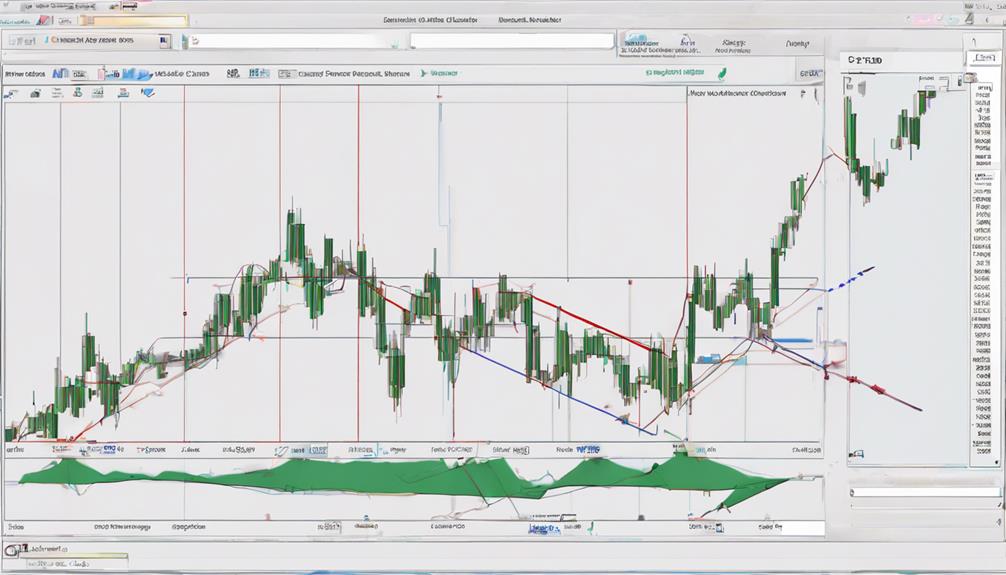
Adapting trading strategies to effectively incorporate Keltner Channels involves strategic utilization of breakouts and technical indicators to optimize entry and exit points in the market. To enhance trading outcomes, consider the following:
- Swing Trading: Utilize Keltner Channels for swing trading by identifying breakouts above or below the channels as potential entry signals.
- Technical Indicators: Combine Keltner Channels with other technical indicators such as moving averages to validate trend signals and improve trading decisions.
- EMA Length: Adjust the length of the Exponential Moving Average (EMA) in Keltner Channels to capture either shorter-term or longer-term price movements effectively.
- Volume Analysis: Enhance the accuracy of trade signals by incorporating volume analysis alongside Keltner Channels to confirm the strength of price movements.
What Are the Key Steps to Interpret Keltner Channels for Beginners?
When using Keltner channels as a beginner, start by understanding the basic concept and purpose of these technical analysis tools. Study how the upper and lower channels are calculated and how they can be used to identify potential overbought or oversold conditions in the market. Practice interpreting Keltner channels on different trading charts.
Frequently Asked Questions
How Do You Read Keltner Channels?
Reading Keltner Channels involves observing price action in relation to the bands, with breakouts indicating potential trends. The width of the channel reflects market volatility. Traders use this information for strategic trade decisions, entries, exits, and trend identification.
What Is the Best Strategy for the Keltner Channel?
The best strategy for the Keltner Channel involves leveraging the middle EMA line for trend identification and the dynamic upper and lower bands for support and resistance. Traders monitor price interactions to spot potential breakout or breakdown opportunities, enhancing trade accuracy.
What Is a Keltner Channel Analysis?
A Keltner Channel analysis involves utilizing volatility-based bands derived from an Exponential Moving Average (EMA) and Average True Range (ATR) to assess asset price trends. It helps traders gauge trend strength, potential entry/exit points, and trend changes.
What Is the Strategy of the Keltner Channel and Stochastic Oscillator?
The strategy involving the Keltner Channel and Stochastic Oscillator combines trend identification with momentum confirmation. Traders seek buy signals when price breaks above the upper Keltner band and Stochastic indicates oversold conditions, while sell signals are identified vice versa.
Conclusion
In conclusion, mastering the interpretation of Keltner Channels is crucial for traders seeking to analyze volatility, identify trends, and make informed trading decisions.
One interesting statistic to consider is that according to a study conducted by a leading financial institution, traders who effectively utilize Keltner Channels in their strategies have shown a 15% increase in profitability compared to those who do not.
This emphasizes the importance of understanding and applying Keltner Channels in the financial markets.


